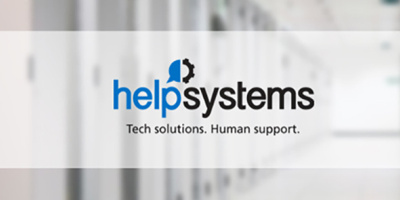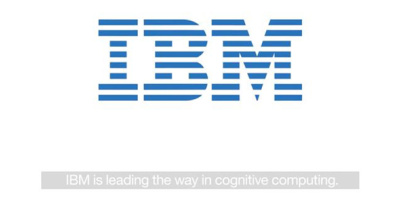Designed to reduce costs for mid-sized businesses but outperform commodity servers running Linux on x86, the POWER7-based servers are designed to scale for big-data analysis or specific industry applications.
IBM will introduce its first Linux-only servers that will directly compete with commodity x86 machines from HP and Dell and be targeted at mid-sized businesses who wish to use them for analyzing large amounts of data, running industry-specific applications, and delivering open-source infrastructure services, according to published reports.
Named the PowerLinux 7R2, the machine is structurally the same as the Power 730 Express server but will ship with either Red Hat Enterprise Linux 6 (RHEL 6) or SUSE Linux Enterprise Server 11 SP1 (SLES 11). Also new is the IBM Flex System PowerLinux p24L Compute Node for the recently announced IBM PureFlex System, part of the IBM PureSystems family of integrated systems.
The 7R2 is a two-socket system that supports 16 POWER7 microprocessor cores and comes with the PowerVM hypervisor built-in. The PowerLinux Compute Node is a Linux-specific two-socket compute node that has either 12 or 16 cores, either SUSE or Red Hat enterprise Linux, and PowerVM.
New PowerLinux solutions will offer deep integration with Linux-specific POWER7 processor-based hardware to analyze big data, manage industry specific applications, and deliver open-source infrastructure services. IBM PowerLinux Big Data Analytics Solution can handle big data analytics projects using Apache Hadoop. IBM InfoSphere BigInsights will allow organizations to analyze data at rest when it is made generally available June 15. Tests have shown that it runs 37 percent faster on PowerLinux than on comparable x86 machines, according to published reports originating from IBM. IBM InfoSphere Streams for PowerLinux, which analyzes data in motion, is currently available.
IBM also has introduced PowerLinux industry application solutions, such as the IBM PowerLinux Solution Edition for SAP Applications. The promise is that mid-sized organizations can deliver these services at a lower cost per workload and with greater reliability than on x86 commodity servers running Windows or Linux. ISVs reportedly are gearing up to provide pre-integrated, tested and validated solutions across a variety of industries.
The new IBM PowerLinux Open Source Infrastructure Services Solution offers control over server and virtual image sprawl with PowerVM for PowerLinux virtualization services. Business can deliver services such as Web, email, and social business collaboration more cost effectively and just as securely running scalable open-source software on PowerLinux with PowerVM.





















 More than ever, there is a demand for IT to deliver innovation. Your IBM i has been an essential part of your business operations for years. However, your organization may struggle to maintain the current system and implement new projects. The thousands of customers we've worked with and surveyed state that expectations regarding the digital footprint and vision of the company are not aligned with the current IT environment.
More than ever, there is a demand for IT to deliver innovation. Your IBM i has been an essential part of your business operations for years. However, your organization may struggle to maintain the current system and implement new projects. The thousands of customers we've worked with and surveyed state that expectations regarding the digital footprint and vision of the company are not aligned with the current IT environment. TRY the one package that solves all your document design and printing challenges on all your platforms. Produce bar code labels, electronic forms, ad hoc reports, and RFID tags – without programming! MarkMagic is the only document design and print solution that combines report writing, WYSIWYG label and forms design, and conditional printing in one integrated product. Make sure your data survives when catastrophe hits. Request your trial now! Request Now.
TRY the one package that solves all your document design and printing challenges on all your platforms. Produce bar code labels, electronic forms, ad hoc reports, and RFID tags – without programming! MarkMagic is the only document design and print solution that combines report writing, WYSIWYG label and forms design, and conditional printing in one integrated product. Make sure your data survives when catastrophe hits. Request your trial now! Request Now. Forms of ransomware has been around for over 30 years, and with more and more organizations suffering attacks each year, it continues to endure. What has made ransomware such a durable threat and what is the best way to combat it? In order to prevent ransomware, organizations must first understand how it works.
Forms of ransomware has been around for over 30 years, and with more and more organizations suffering attacks each year, it continues to endure. What has made ransomware such a durable threat and what is the best way to combat it? In order to prevent ransomware, organizations must first understand how it works. Disaster protection is vital to every business. Yet, it often consists of patched together procedures that are prone to error. From automatic backups to data encryption to media management, Robot automates the routine (yet often complex) tasks of iSeries backup and recovery, saving you time and money and making the process safer and more reliable. Automate your backups with the Robot Backup and Recovery Solution. Key features include:
Disaster protection is vital to every business. Yet, it often consists of patched together procedures that are prone to error. From automatic backups to data encryption to media management, Robot automates the routine (yet often complex) tasks of iSeries backup and recovery, saving you time and money and making the process safer and more reliable. Automate your backups with the Robot Backup and Recovery Solution. Key features include: Business users want new applications now. Market and regulatory pressures require faster application updates and delivery into production. Your IBM i developers may be approaching retirement, and you see no sure way to fill their positions with experienced developers. In addition, you may be caught between maintaining your existing applications and the uncertainty of moving to something new.
Business users want new applications now. Market and regulatory pressures require faster application updates and delivery into production. Your IBM i developers may be approaching retirement, and you see no sure way to fill their positions with experienced developers. In addition, you may be caught between maintaining your existing applications and the uncertainty of moving to something new. IT managers hoping to find new IBM i talent are discovering that the pool of experienced RPG programmers and operators or administrators with intimate knowledge of the operating system and the applications that run on it is small. This begs the question: How will you manage the platform that supports such a big part of your business? This guide offers strategies and software suggestions to help you plan IT staffing and resources and smooth the transition after your AS/400 talent retires. Read on to learn:
IT managers hoping to find new IBM i talent are discovering that the pool of experienced RPG programmers and operators or administrators with intimate knowledge of the operating system and the applications that run on it is small. This begs the question: How will you manage the platform that supports such a big part of your business? This guide offers strategies and software suggestions to help you plan IT staffing and resources and smooth the transition after your AS/400 talent retires. Read on to learn:
LATEST COMMENTS
MC Press Online